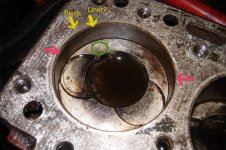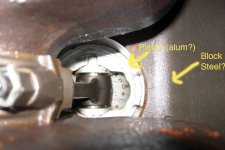TYMinColton
Gold Member
- Joined
- Mar 18, 2008
- Messages
- 274
- Location
- Colton, OR
- Tractor
- 2008 TYM T273 w/ FEL - 100 hrs, 1962ish Ford 881D project - hrs unknown
The cylinder walls would be cleaned up with a hone, and if there is not pitting, you could get by with that. I can't really tell from the photos, but to me it doesn't look all that bad.
Good luck!
Thanks. A hone is one of the tools on my list. I should have a much better idea about the condition of the cylinders once the pistons are out. Unfortunately, the "gudge" on the cylinder walls is making it nearly impossible to drive the pistons out through the top of the block. I think I might have to remove the crank shaft and then remove the pistons from underneath


